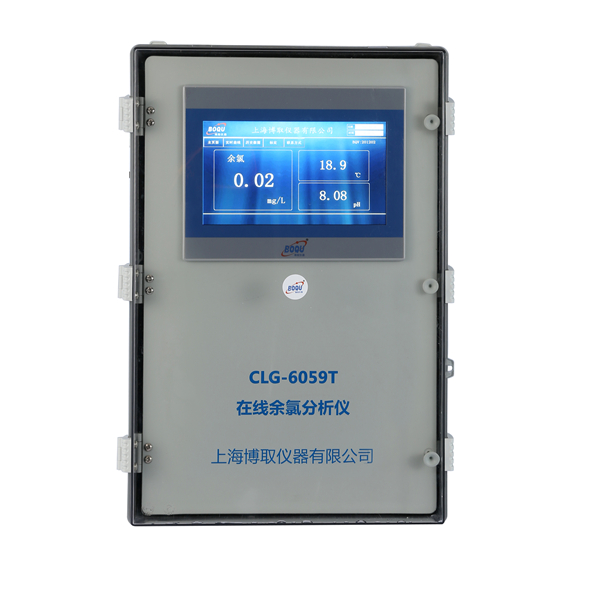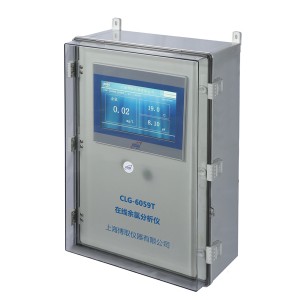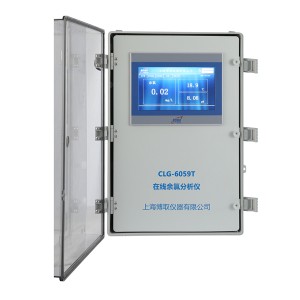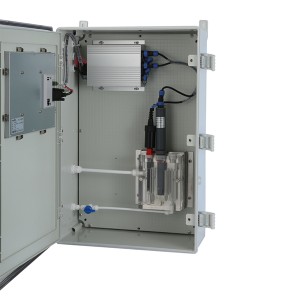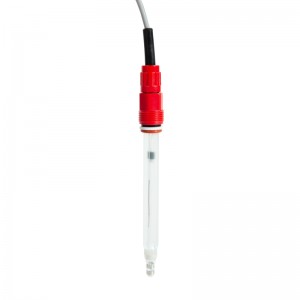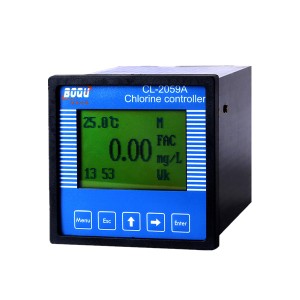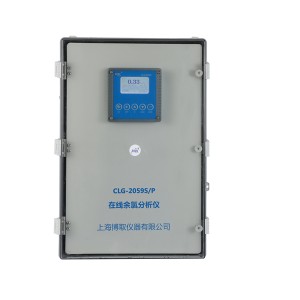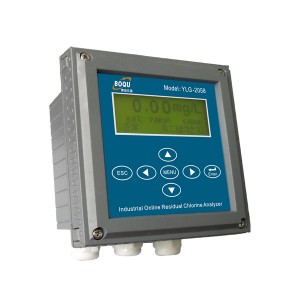Application field
Monitoring of chlorine disinfection treatment water such as swimming pool water, drinking water, pipe network and secondary water supply etc.
|
Measurement configuration |
PH/Temp/residual chlorine |
|
|
Measuring range |
Temperature |
0-60℃ |
|
pH |
0-14pH |
|
|
Residual chlorine analyzer |
0-20mg/L (pH: 5.5-10.5) |
|
|
Resolution and accuracy |
Temperature |
Resolution: 0.1℃ Accuracy: ±0.5℃ |
|
pH |
Resolution: 0.01pH Accuracy: ±0.1 pH |
|
|
Residual chlorine analyzer |
Resolution: 0.01mg/L Accuracy: ±2% FS |
|
|
Communication Interface |
RS485 |
|
|
Power supply |
AC 85-264V |
|
|
Water flow |
15L-30L/H |
|
|
Working Environment |
Temp:0-50℃; |
|
|
Total power |
50W |
|
|
Inlet |
6mm |
|
|
Outlet |
10mm |
|
|
Cabinet size |
600mm×400mm×230mm(L×W×H) |
|
Residual chlorine is the low level amount of chlorine remaining in the water after a certain period or contact time after its initial application. It constitutes an important safeguard against the risk of subsequent microbial contamination after treatment—a unique and significant benefit for public health.
Chlorine is a relatively cheap and readily available chemical that, when dissolved in clear water in sufficient quantities, will destroy most disease causing organisms without being a danger to people. The chlorine, however, is used up as organisms are destroyed. If enough chlorine is added, there will be some left in the water after all the organisms have been destroyed, this is called free chlorine. (Figure 1) Free chlorine will remain in the water until it is either lost to the outside world or used up destroying new contamination.
Therefore, if we test water and find that there is still some free chlorine left, it proves that most dangerous organisms in the water have been removed and it is safe to drink. We call this measuring the chlorine residual.
Measuring the chlorine residual in a water supply is a simple but important method of checking that the water that is being delivered is safe to drink

